Nutritious Green Foods You Didn’t Know About
Good nutrition is all about variety! Browse through our list of unusual fruits and veggies and give yourself a chance to try something new.


I am in the process of cutting down my body fat, but nothing seems to work. My metabolism is not very good, but I’m doing cardio 3 times a week. I also not eating as many calories to cut down. What and how many times should I eat if I want a six-pack?
– Arib C.

First and foremost, I hope you’re incorporating some resistance training into your workout routine! Cardio is great for reducing body fat around the belly, but six-pack abs are made from strength training to develop those abdominal muscles. See a ProResults® trainer for assistance and listen to one’s advice for best ab machines on our Ask a Trainer series.
That said, you should eat three to six times per day, schedule and appetite permitting. If you choose to eat more frequent meals and snacks, pay attention to portions so you’re redistributing the calories you eat, not adding more. Meals and snacks should be based on vegetables – lots of them!, lean protein, and complex carbohydrates with fresh fruit and low-fat dairy to complement. Avoiding alcohol and added sugars is essential if you aren’t getting results.
– Debbie J., MS, RD
This article should not replace any exercise program or restrictions, any dietary supplements or restrictions, or any other medical recommendations from your primary care physician. Before starting any exercise program or diet, make sure it is approved by your doctor.
Some questions have been edited for length and/or clarity.
 Have a nutrition question? Our registered dietitian is ready to help!
Have a nutrition question? Our registered dietitian is ready to help!
Email nutrition@lafitness.com or submit your question below and it may be featured in an upcoming article!
Good nutrition is all about variety! Browse through our list of unusual fruits and veggies and give yourself a chance to try something new.
Does liberally salting your food help you pump more iron in the gym? Registered Dietitian, Debbie James, investigates the claims!
One frequently asked question is about the recommended intake of protein. We hear you! Here is everything you need to know.
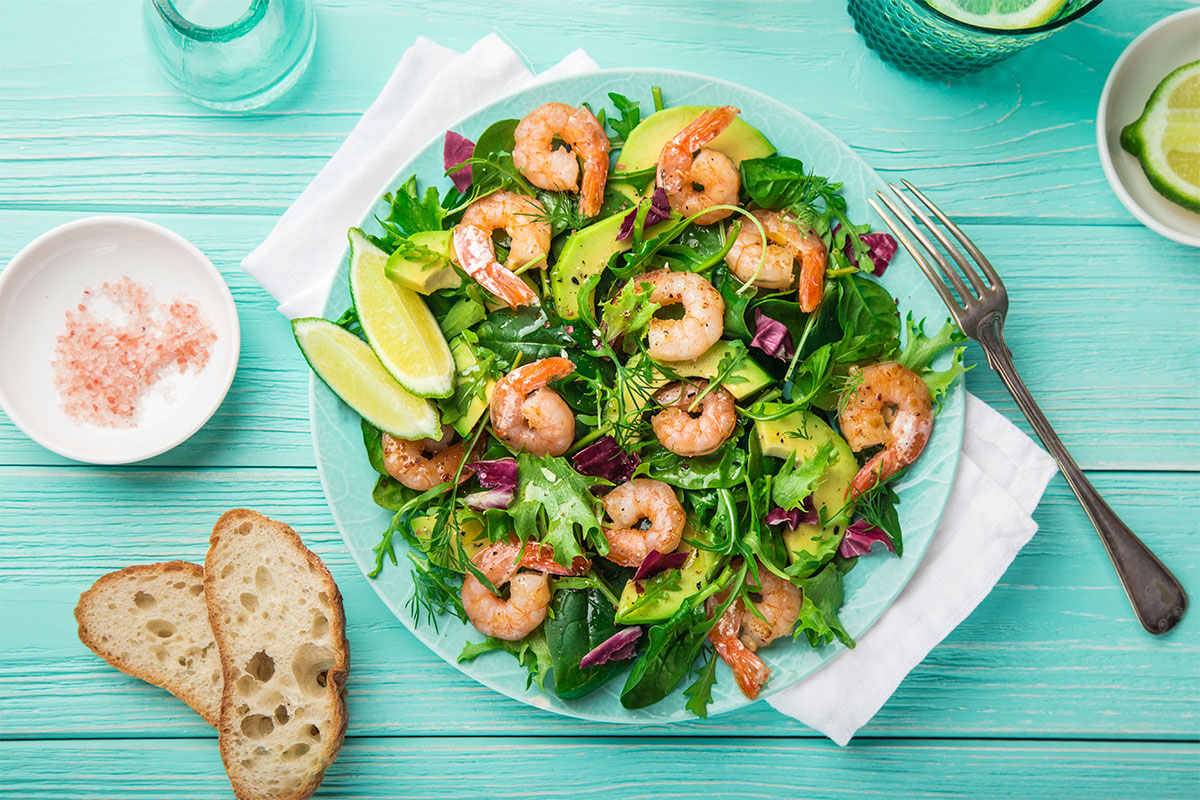

I am a 60-year-old male in fairly good shape. I’m lean with 16 to 17% body fat. I am in the gym three times a week, usually after work for about two hours each day. I start with 15 min. of cardio and I do abs every day between sets. I have a GNC protein shake for breakfast every day, oatmeal at 10am, salad for lunch, and on work out days I use a C4 pre-workout and a GNC Performix Shake post-workout. I then have a salad with lots of vegetables for dinner. I try very hard to limit sugar, carbs, and red meat.
I see improvements in my workout strength. I see definition improvements (no bulking) but the last little fat around the tummy remains. I started at 210 lbs. 6 years ago. I have been running around 170 to 175 lbs. for about 4 years now. The body fat number is staying around 17%.
What should I eat for lunch before working out? And what should I eat for dinner after I work out? And what should I eat on non-workout days?
– Larry B.

Kudos on your consistent power workouts! I would recommend that on your workout days your lunch salad include a legume, lean protein and healthy fat in addition to the greens since you have several hours to fuel before exercise. For example, choose one* from each column:
|
Greens |
Legume |
Lean Protein |
Healthy Fat |
Other Veggies x2 |
|
Spinach |
Edamame |
Chicken Breast |
Avocado |
Tomato, Carrot |
|
Kale |
Chickpeas |
Shrimp |
Olives |
Artichoke, Broccoli |
|
Mesclun |
Black Beans |
Tuna |
Diced Walnuts |
Cucumber, Radish |
|
Leaf Lettuce |
Kidney Beans |
Turkey Breast |
Sliced Almonds |
Celery, Red Onion |
|
Cabbage |
Cannellini Beans |
Salmon |
Pepitas |
Bell Pepper, Beet |
At dinner, I’d suggest including a starchy vegetable such as corn, yam or butternut squash and tofu or low-fat cheese to prop up your evening salad after exercise. You can maintain your normal eating regimen on non-workout days through a solid breakfast to replace the protein shake is advised. Just keep to the same calorie level.
Here are four options:
– Debbie J., MS, RD
This article should not replace any exercise program or restrictions, any dietary supplements or restrictions, or any other medical recommendations from your primary care physician. Before starting any exercise program or diet, make sure it is approved by your doctor.
Some questions have been edited for length and/or clarity.
 Have a nutrition question? Our registered dietitian is ready to help!
Have a nutrition question? Our registered dietitian is ready to help!
Email nutrition@lafitness.com or submit your question below and it may be featured in an upcoming article!
Good nutrition is all about variety! Browse through our list of unusual fruits and veggies and give yourself a chance to try something new.
Does liberally salting your food help you pump more iron in the gym? Registered Dietitian, Debbie James, investigates the claims!
One frequently asked question is about the recommended intake of protein. We hear you! Here is everything you need to know.
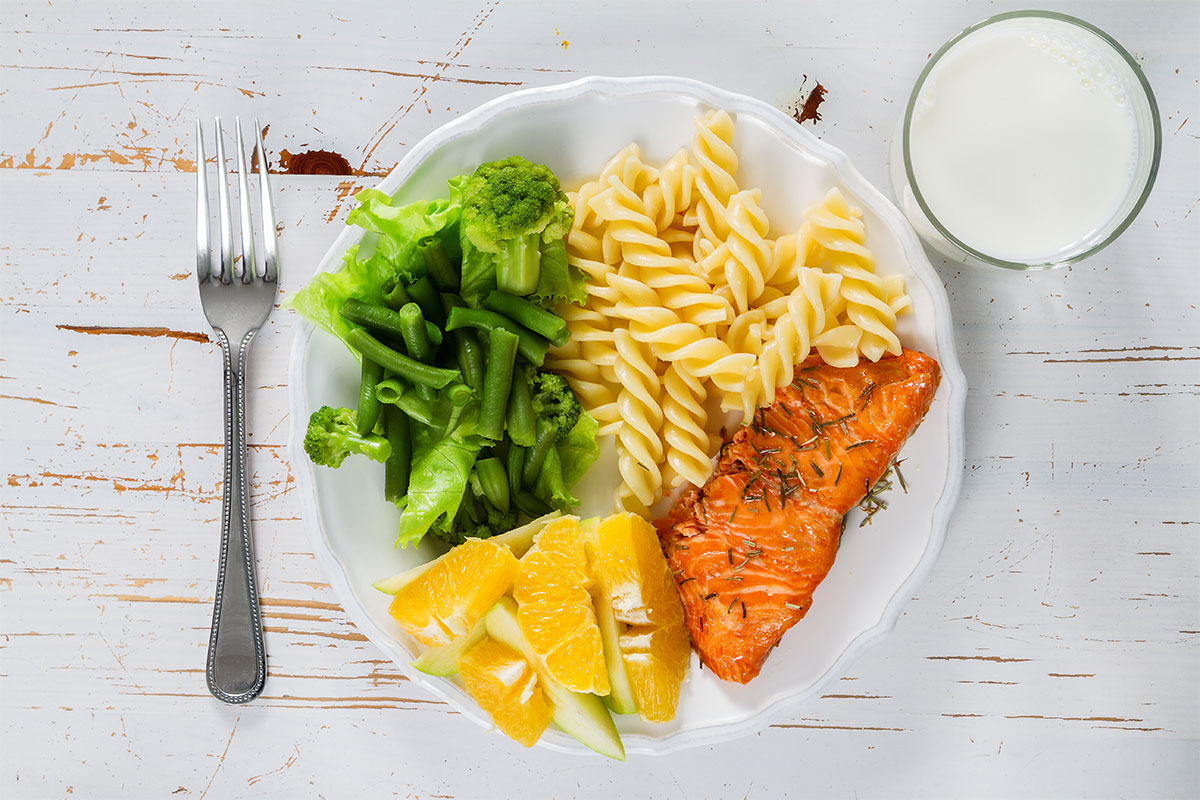

Please help me better understand portion control. How much is too much versus too little? Is there a chart to help explain the differences between men and women? Does age and weight matter? Are there ways to make portion controlling easier?

Controlling portions is a way to manage volume of food served and thus consumed. There is no specific way that is the best, just as there is no perfect serving for all people of any one particular food. A standard portion is a means to compare the nutritional content of different foods, e.g. “a half-cup of ice cream versus a half-cup of popcorn…”
The approach I recommend is a combination of a) the American Institute for Cancer Research’s “New American Plate” which has a greater proportion of plant foods than a typical diet and b) serving sizes adjusted for energy needs as suggested by MyPlatePlan. The key is to know your total caloric requirement first! This takes into account gender, age and weight.
Here are some common portion sizes provided in terms of measure with a corresponding way to “eyeball” the relative portion size in order to help you identify what portions look like. You can also practice by using your scale to weight various foods and then attribute a way to gauge that portion size by using objects such as your hands and fingers. See the examples below.
Bread, Cereal, Rice and Pasta (commonly 1-3 per meal)
Vegetables (goal: 2-3 per meal)
Meat and Protein (commonly 1-3 per meal)
Fats and Oils (limit to 1 per meal)
Fruit (commonly 2-3 per day)
Milk, Cheese and Dairy products (commonly 1-3 per day)
– Debbie J., MS, RD
This article should not replace any exercise program or restrictions, any dietary supplements or restrictions, or any other medical recommendations from your primary care physician. Before starting any exercise program or diet, make sure it is approved by your doctor.
Some questions have been edited for length and/or clarity.
 Have a nutrition question? Our registered dietitian is ready to help!
Have a nutrition question? Our registered dietitian is ready to help!
Email nutrition@lafitness.com or submit your question below and it may be featured in an upcoming article!
Good nutrition is all about variety! Browse through our list of unusual fruits and veggies and give yourself a chance to try something new.
Does liberally salting your food help you pump more iron in the gym? Registered Dietitian, Debbie James, investigates the claims!
One frequently asked question is about the recommended intake of protein. We hear you! Here is everything you need to know.

It takes more than regular walks and the daily crossword to keep your brain in top cognitive shape! What you eat plays a larger role in mental fitness and preventing age-related decline in brain function. Like the rest of your body, the brain needs to be properly nourished from the start for optimum performance. An overall healthy diet is great, in addition there are certain types of food that promote brain health. Here’s a rundown of these brain preservers:
Oily fish like wild salmon, albacore tuna and sardines provide docosahexaenoic acid (DHA), a type of omega-3 essential for brain development and function, helping neurons trigger and cells regenerate. Long-term intake of adequate DHA has been linked to improved memory and learning ability. People who regularly eat fish are less likely than their peers to have depression. In fact, the American Psychiatric Association has endorsed the fatty acids in fish as an effective part of depression treatment.1
You can’t start too early! The FDA and EPA agree eating fish is especially important for pregnant or nursing women because it helps with the growth and development of children’s brains and even helps boost IQ.
Vegans can get their omega-3s from flaxseed, walnuts, chia seeds, algae-like seaweed or supplements.

Green leafy vegetables like spinach, kale, and collard greens provide vitamin K, folate, beta carotene, and lutein – nutrients that may support brain function and cognitive health.2 Eat at least one-half cup serving of leafy greens daily to get enough of these neuroprotective compounds.
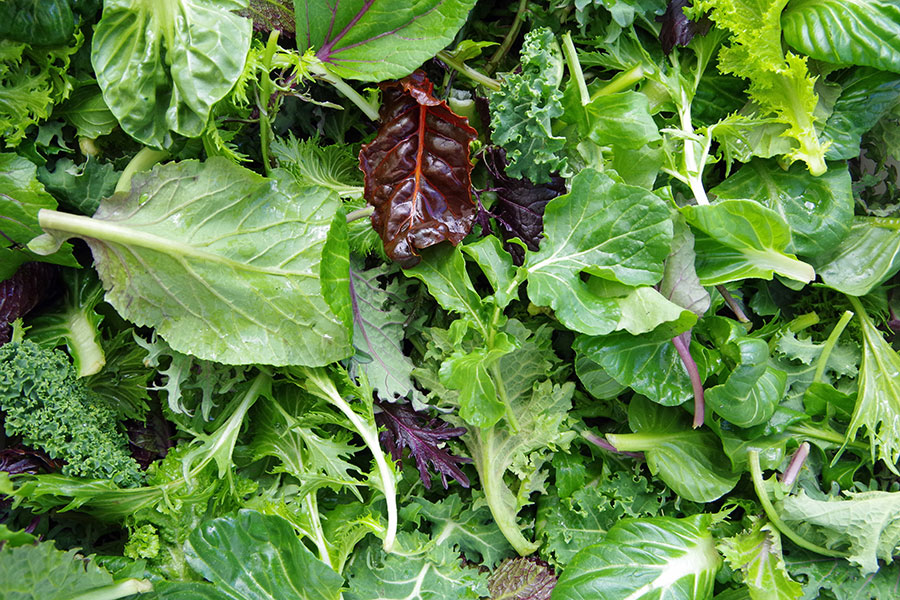
Powerful oxidation fighters that protect the brain3 are found in vegetables (broccoli, leafy greens), fruits (berries), nuts and the spice curcumin. Antioxidants’ positive effects on neural function are the reason why such foods are encouraged for younger people to slow age-related memory decline and prevent Alzheimer’s disease.

A cardiovascular protective diet is an important factor in battling age-related declines in brain function. Cerebrovascular disease, Alzheimer’s disease, and dementia are linked by the circulatory system; vascular cognitive impairment and vascular dementia stem from damage to the vessels leading to the brain.
Good nutrition in younger people is associated with better blood flow and increased brain size, thus protecting the brain from age-related volume decrease. Also, maintaining a healthy weight may preserve gray matter from dementia-related decline.4

Because they counteract the effects of sodium on fluid balance, potassium-rich foods are important to combat hypertension, a well-documented risk factor for dementia. Potassium-rich foods include potatoes, tomatoes, bananas, coconut water, avocado and winter squash.
The National Academy of Sciences even assigned “managing blood pressure for people with hypertension” as one of the three classes of interventions to prevent cognitive decline.5 And the MIND diet (a combination of DASH “Dietary Approaches to Stop Hypertension” with a Mediterranean diet) is associated with preservation of stroke survivors’ brain function.

Following a Mediterranean diet might improve cognitive function in seniors and delay the onset of Alzheimer’s disease by a few years.6,7,8 A Mediterranean diet is characterized by high intake of vegetables, legumes, fruits, cereals, fish and unsaturated fatty acids (mostly as olive oil), low intake of saturated fatty acids, meat and poultry, low/moderate intake of dairy products and a regular but moderate amount of alcohol (mostly wine drank at meals).
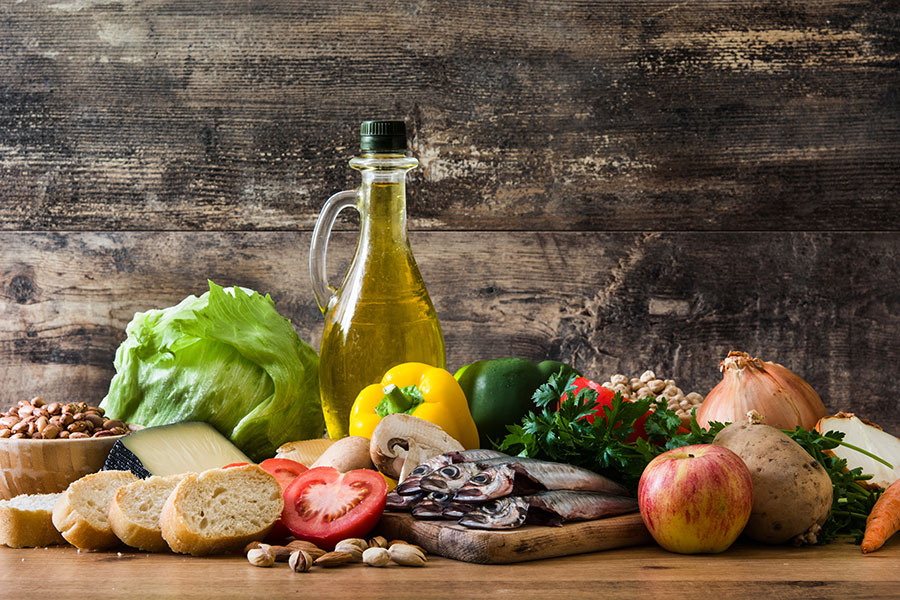
Coffee consumption is correlated with a reduced risk of developing Alzheimer’s disease and Parkinson’s disease.9 This neuroprotective benefit is independent of caffeine but may be related to the roasting process due to one of coffee’s polyphenolic compounds.10

Whether you choose fish, potassium-rich fruits and vegetables, coffee or an array of heart-healthy powerhouse foods it’s possible to boost brain power, function, and mental wellness while forestalling degenerative brain disease through diet. Nutrition is often the best medicine – now that’s food for thought!
References:
Good nutrition is all about variety! Browse through our list of unusual fruits and veggies and give yourself a chance to try something new.
Does liberally salting your food help you pump more iron in the gym? Registered Dietitian, Debbie James, investigates the claims!
One frequently asked question is about the recommended intake of protein. We hear you! Here is everything you need to know.
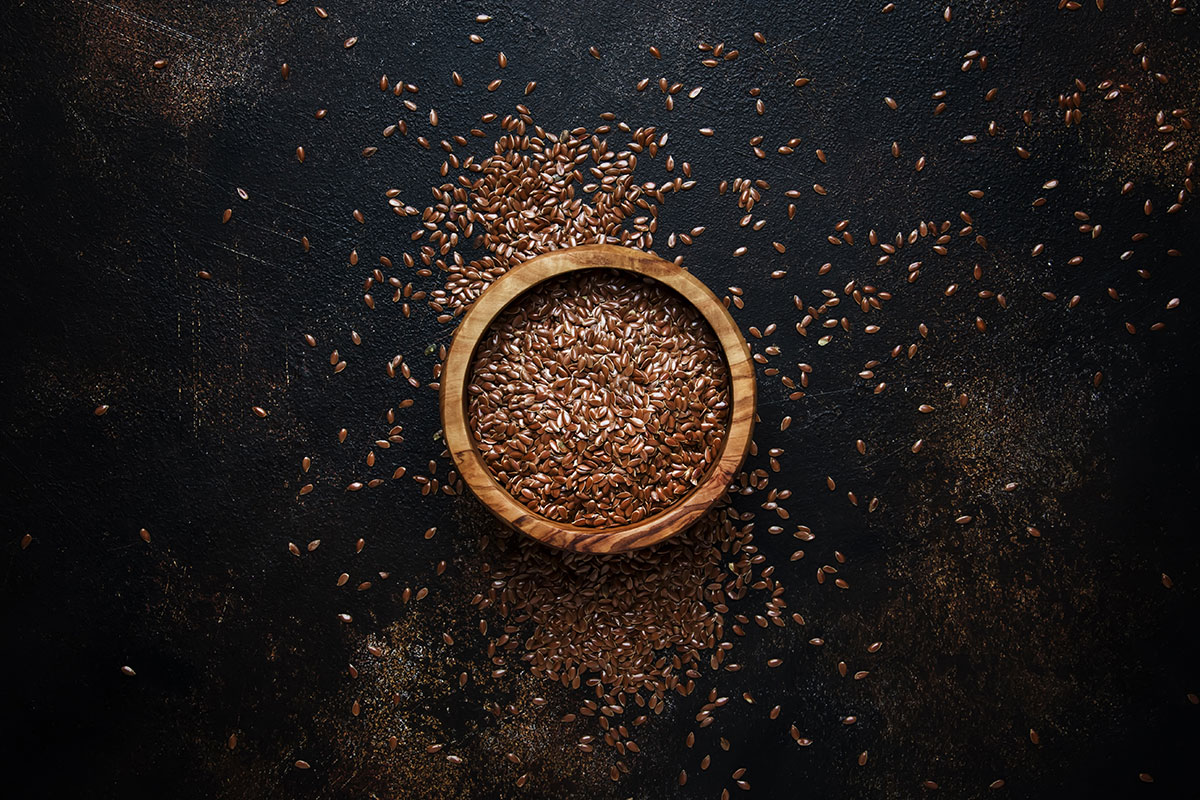

Does flaxseed help in increasing fertility and weight loss?
– Shamily BM

There has been a lot of chatter in the media regarding flaxseeds and fertility. Looking at the research, I found evidence to support its effect on menstrual cycle and hot flashes, but nothing conclusive regarding conception in humans. So, flaxseed may have an insignificant effect.
Flaxseeds are high in fiber which helps promote satiety so that appetite is dampened and fewer calories are consumed. Theoretically, this would translate into weight loss if people didn’t compensate elsewhere in their diets. Again, there’s a lack of studies showing an isolated effect on body weight from flaxseed consumption alone.
No matter the physiological effect, it would take a lot of flaxseed to make an apparent isolated difference. My advice is that cracked or crushed flaxseeds* should be included to complement an overall healthy diet, similar to the addition of chia seeds, garlic, or ginger. Start with a teaspoon here and there to see in which foods it’s most acceptable. I like it on yogurt, in smoothies, oatmeal, grain breads, mustard, soups, and meatballs. If you’re committed you can work up to 2-4 tablespoons of flaxseed a day, as recommended by health experts.
*Why cracked or crushed flaxseed is best – Whole flaxseed is a good source of soluble fiber and lignans (phytoestrogen precursor) but isn’t fully digested to get the full nutritional benefit. Freshly cracked or crushed flaxseeds offer fiber and lignans plus thiamin, magnesium, and omega-3 fatty acids including alpha-linolenic acid. Ground flaxseed, milled flaxseed, and flax meal can also be used but spoil more readily than the whole flaxseed, so keep them in the freezer. Flaxseed oil doesn’t contain the fiber, lignans or micronutrients; it only has the fat.
– Debbie J., MS, RD
This article should not replace any exercise program or restrictions, any dietary supplements or restrictions, or any other medical recommendations from your primary care physician. Before starting any exercise program or diet, make sure it is approved by your doctor.
Some questions have been edited for length and/or clarity.
 Have a nutrition question? Our registered dietitian is ready to help!
Have a nutrition question? Our registered dietitian is ready to help!
Email nutrition@lafitness.com or submit your question below and it may be featured in an upcoming article!
Good nutrition is all about variety! Browse through our list of unusual fruits and veggies and give yourself a chance to try something new.
Does liberally salting your food help you pump more iron in the gym? Registered Dietitian, Debbie James, investigates the claims!
One frequently asked question is about the recommended intake of protein. We hear you! Here is everything you need to know.
Be the first to know about exclusive
content, deals and promotions